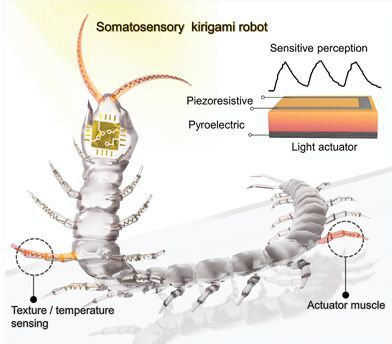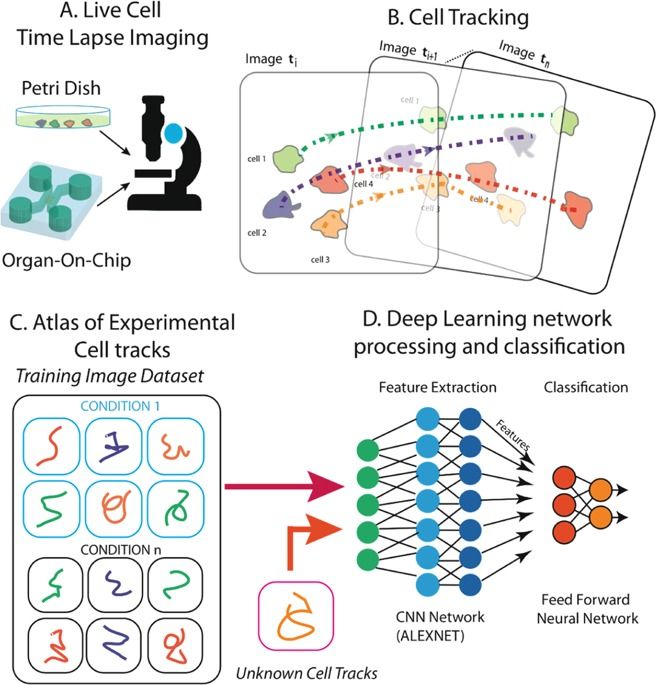Living organisms are capable of sensing and responding to their environment through reflex‐driven pathways. The grand challenge for mimicking such natural intelligence in miniature robots lies in achieving highly integrated body functionality, actuation, and sensing mechanisms. Here, somatosensory light‐driven robots (SLiRs) based on a smart thin‐film composite tightly integrating actuation and multisensing are presented. The SLiR subsumes pyro/piezoelectric responses and piezoresistive strain sensation under a photoactuator transducer, enabling simultaneous yet non‐interfering perception of its body temperature and actuation deformation states. The compact thin film, when combined with kirigami, facilitates rapid customization of low‐profile structures for morphable, mobile, and multiple robotic functionality. For example, an SLiR walker can move forward on different surfaces, while providing feedback on its detailed locomotive gaits and subtle terrain textures, and an SLiR anthropomorphic hand shows bodily senses arising from concerted mechanoreception, thermoreception, proprioception, and photoreception. Untethered operation with an SLiR centipede is also demonstrated, which can execute distinct, localized body functions from directional motility, multisensing, to wireless human and environment interactions. This SLiR, which is capable of integrated perception and motility, offers new opportunities for developing diverse intelligent behaviors in soft robots.








